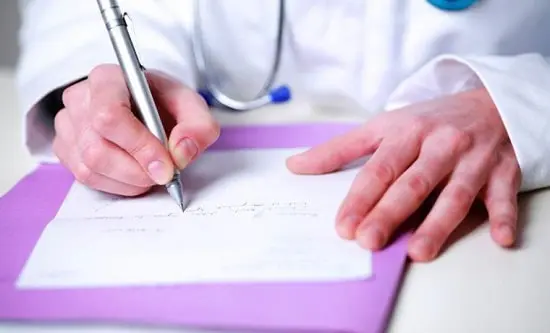Have you ever looked at your doctor's prescription and pondered why they had such terrible handwriting? Certainly, this is a concept that has crossed each of our minds at some point. A doctor's writing is often not just poor, but unintelligible.
No amount of squinting will make the letters any clearer on a handwritten prescription or doctor's notes, as anyone who has ever experienced either of these situations can attest. Somehow, having poor handwriting seems to be a prerequisite for becoming a doctor. It's not uncommon to come encounter your doctor's handwriting in your medical records, even though most hospitals and clinics now use electronic systems, and it can be difficult to understand.
Several factors contribute to doctors' poor handwriting. Bad handwriting is typically associated with doctors because of their habit of taking notes regularly. To become a practicing physician, one must first pass a battery of tests. As if that weren't enough, you'll still need to be able to write swiftly.
After years of experience in their industries, they learn to jot down only the most crucial details quickly. Every patient data is extremely important, thus doctors must meticulously document every detail. It's inevitable that, in their haste, they'll begin using sloppy handwriting.
Let’s understand the reasons for bad handwriting of doctors in detail:

Discharge summaries, medication charts, referrals forms, x-ray & pathology slips are just few of the much paperwork that need to be filled out on the wards. If you follow me, that is. To top it all off, you're always racing against the clock. In most cases, the workload at a hospital will be too much for you to manage well. You decide to bypass the proper procedures. When you can sign a document in less than a millisecond, why spend five seconds doing it?
Due of the time constraints and huge burden, your handwriting gradually deteriorates. Now, things get really difficult if your handwriting is poor to begin with. Your handwriting could wind up looking like chicken scribble.
Yet, there is a more fundamental explanation for why doctors are stereotyped as having poor handwriting.
A physician's terrible handwriting could be due to a number of factors. Those who aspire to become doctors must diligently document and analyze a great deal of data throughout their academic careers.
They go to many of conferences and write up notes that will help their future work. As long as the doctor, pharmacists, and nurses who work with him or her can read it, no one else needs to be able to. A lot of doctors take pride in their sloppy handwriting because it shows they care more about actually helping patients than they do about documenting their interactions with them.
The hand muscles required for legible writing can become fatigued from daily tasks such as recording patient information and writing prescriptions.
Handwriting quality may decline as the day progresses and more and more writing is required. Physicians are aware of this, and therefore take measures to guarantee accurate documentation at all times.
Most doctors today use electronic prescriptions so there is no room for misunderstanding. In some cases, though, doctors may still issue paper prescriptions.
However, the handwriting on these prescriptions is often difficult to read. But, a pharmacist may be able to decipher the written prescription if you provide it to them. The right drugs are then provided, and directions for taking them are provided.
You can decipher a doctor's unreadable handwriting on a prescription by looking for keywords and distinguishing marks made by that doctor. In medical school, students learn to clearly write out terms like "units" and "words" that are used to describe dosages.
Several units have their abbreviations used instead of their full names. Doctors of pharmacy are familiar with these abbreviated prescriptions and can interpret them accurately. Although computerized prescriptions are more commonplace now, it's still important to be able to read your doctor's handwriting in case of an emergency.
Medical students learn to clearly and concisely express dosages for patients to read and follow. Patients' well-being is stressed during the training as well. There shouldn't be any room for doubt regarding how much of the medication should be administered. Overdosing on a medication can have serious consequences for the patient.
This is why many hospitals and clinics are switching to electronic medical records; they can better track patients' histories and prevent mistakes from being made throughout the prescription process.
In some jurisdictions, medical practitioners are actually required by law to submit prescriptions electronically rather than physically handing over paper slips. The doctors all concur that the margin for mistake has shrunk. Expert argues that the present prescription by doctors is considerably more readable than previous eras.